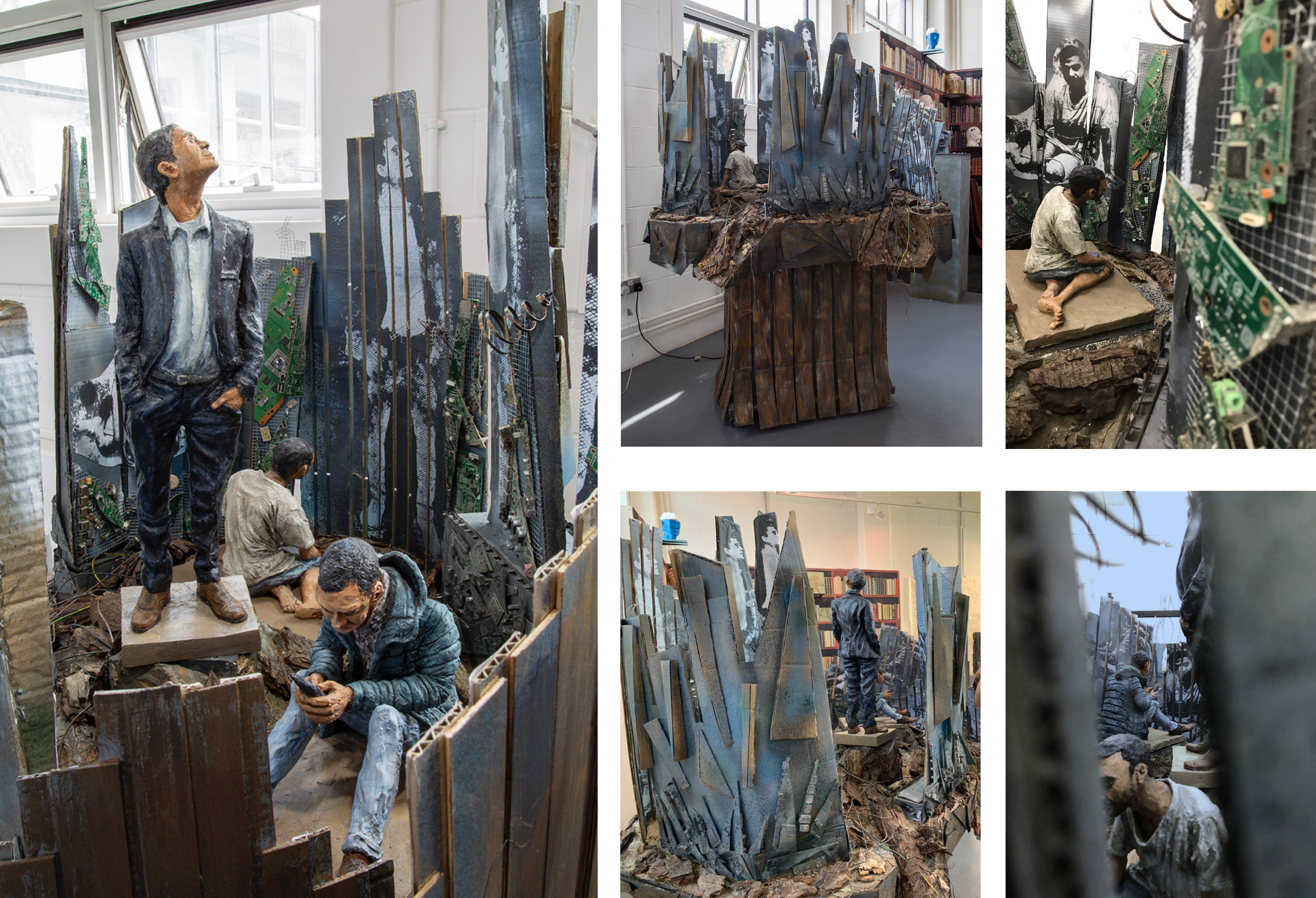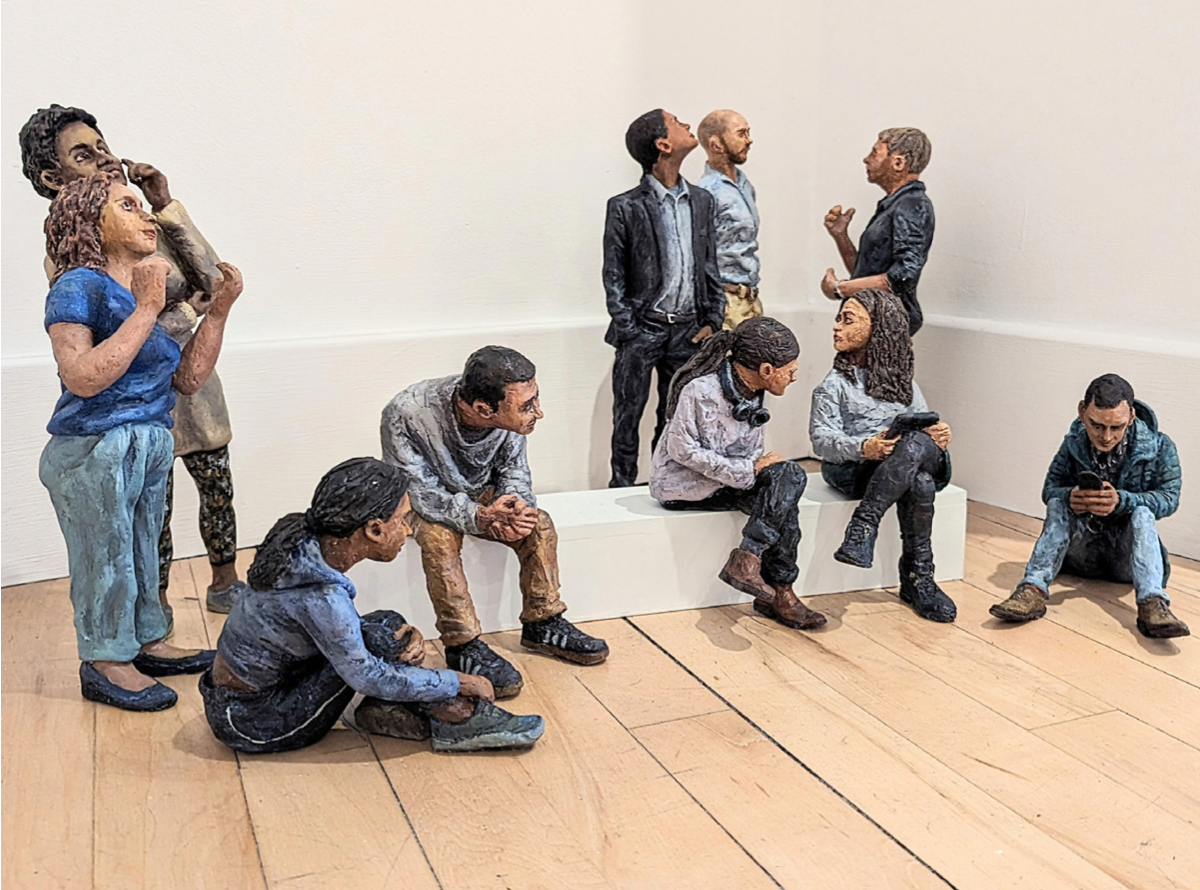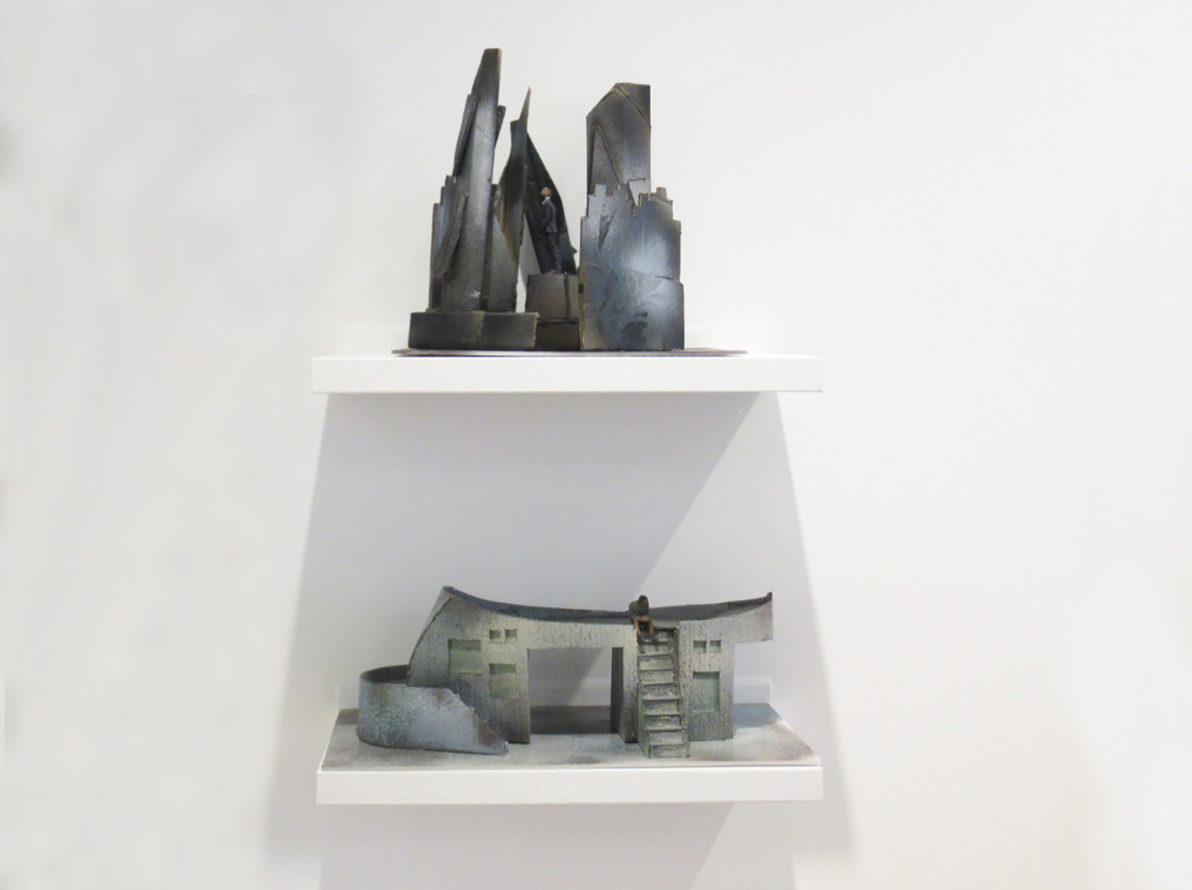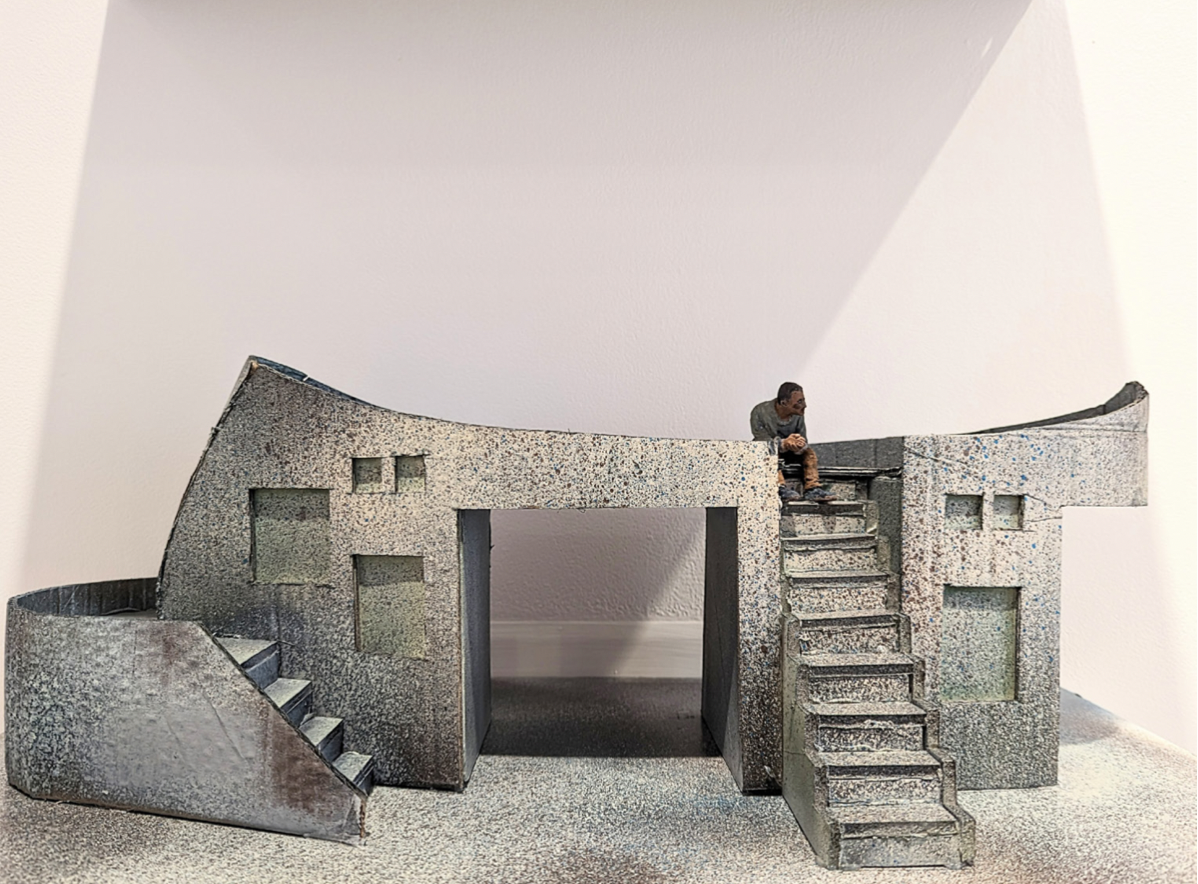ARTIST INTERVIEW: Yasmin Watts
Please can you tell me about yourself
I am a sculptor and architect, living in London. As a British-Indian of Zoroastrian heritage, I am asking, through the making of sculpture, what can be learnt about human interaction in the urban environment through a migrant’s experience.
I am developing a new approach to public sculpture aimed at public cultures, a sculptural space which can communicate to individuals in constantly evolving multi-cultural societies on themes of their assimilation into diverse urban communities, and of social discords within these environments. I ask: what might my sculptures bring to understandings of what it means to live with one another, in heterogeneous urban communities structured around principles of inclusivity and care?
My working approach has been to utilise my former practice as an architect, in creating theatrical settings inspired by the forms and scales of the city in which to place my sculpted human figures within, by playing with proportion and position, gesture and expression.
I am currently studying on the Master in Research Fine Arts programme at the Royal College of Art, London. I have recently exhibited at Cooke Latham Gallery (March 2023). I was awarded the Richard Sharp Sculpture Prize and the Sculpture Rosette Award, completing my Diploma in figurative sculpture at the Heatherly School of Fine Art in 2022.
Tell me about your journey to becoming an artist. What inspired you?
I have always been fascinated by the proportion and positioning of 3-dimensional forms, whether human or built, and the interplay between light and space created between them. I’m driven by wanting to provide a combined form of art and architecture that people can relate to.
From an early age, I have always created visually, making art through drawings, paintings, and junk modelling; art has become my method of communication. I chose architecture as my first vocation, as this allowed me to continue creating but also having the opportunity of realising the design into the built form. My interests in social interpretations of space have steered me into the field of sculpture in public spaces, with wanting to provide a micro-space within the public space, a canvas of expression where local communities can imprint their own identities.
Describe your creative process; from start to finish of a sculpture. Where do you find your inspiration?
My inspirations start with themes about how people interact within their urban environment. I capture their individual movements and gestures and set them within a contemporary architectural setting. I have always been a ‘people-watcher’. I also read and listen to current social discords which help inform my ideas. An advantage of living in London is the wealth of artistic endeavour, both past and current.
With my settings, I begin with sketch drawings, which I conceptualise with making paper and cardboard models. Using my architectural skills, I then create large scale models where I can start to add depth and details to these settings, using an architectural language of platforms, steps, vertical screens and enclosures. Typical materials I use are wood, metal, cardboard, plaster, adding texture with wires, motherboards, gravel and grains. The finishing is done by hand painting.
My sculpted figures, which sit amongst the settings, evolve from hand sketches, clay/wax sculpting and traditional casting methods. I finish with hand painting life-like colours, accentuating the expressions and gestures. I also combine my methods with 3D printing technology, which allows me to play with the scale of these characters to suit each composition.
The Sculpting Process
Tell me about a particular piece of work you are proud of and why
I would say that Cityscape Phoenix is a good example because it was the first of my larger pieces of work that I made, which was both challenging and rewarding. The composition is a mix of stand-alone figures within a low relief cityscape. This work considers 3 individual experiences of a young man in a city of imagination. These perceptions of angst, anticipation and aspiration are reflected on the contemporary low relief towers articulated in pinnacles rising from the earth with peeling layers of technology and the passage of time. The viewer’s eye is channelled through vistas between the solid towers to the 3 centered figures.
How long does it take you to create one of your pieces?
As I work independently, my large pieces of work usually take 2-3 months to create. Working smaller, with A3 sized models, I've been able to create 10 pieces in a similar time frame.
What messages are you trying to convey with your sculptures?
My sculptures address themes of cross-cultural narratives within modern cultures through a migrant's experience; an experience of assimilation, acceptance and belonging.
Through my sculptures, I provide a place of not only interest but a place for people to come and spend time with the work, whether as part of daily routine or offering passers-by a respite and place to reflect. With introducing elements such as steps and raised levels, the viewer is invited to a different experience. Similarly, the effect of vertical screens and enclosures initiate the play of space within and around the works, and presenting vistas and perspective views that the public can experience at eye-level.
How do your surroundings influence your work?
I have a design studio in north London which is my quiet space for thinking, planning, designing and making sketch models. In this space I surround myself with sketches which inform my thinking; this small studio covered in drawings provides an evolving mental map of my stages of development.
I also work in the studios at the RCA in Battersea where I enjoy the collaborative environment of being able to bounce ideas and theory within a multi-cultural atmosphere of research-based artists from around the world; a place where we share our thoughts and experiences.
Who is your favourite artist and why? Do they have an influence on your work?
My main reference is Isamu Noguchi with his experimental creations of sculptures, landscape and architecture, feed directly on many levels with my own designs, especially with the blending of sculpture and architecture.
Louise Nevelson as another favourite sculptor who referred to herself as ‘an architect’ and ‘a builder’. I admire her methods of combining and transforming found objects into art forms, weaving together recognisable forms into organic facades.
What has been your greatest achievement so far as an artist?
My greatest achievement to date has been finding recognition for my sculptures through awards that are bringing me to a wider audience. My thinking and my artistic outputs are developing as a result; allowing me to share with the wider world, while my current audiences can understand these messages which validate what I am making.
My key achievement will be to bring my work to the public realm; communicating my vision of public sculpture by exhibiting a series of large works in the Duveen Galleries at Tate Britain.
Why do you think art is important in society?
My work provides an art-based platform for expression and communication with which the public can interact; a vital element of social wellbeing within our cultural identities and heritages in urban communities.
Using this platform, I relay messages through my work; testimonials – providing dialogue for the ‘hidden; telling stories of individuals or groups who do not have a voice of their own. My sculptures have dialogues, experimenting with autotheory - of how traditional autobiography connects with descriptions of daily life. These are methods which can be expressed through my sculptures, giving a wider context - what do humans, as a fundamentally social species, need in order to co-exist with one another?











